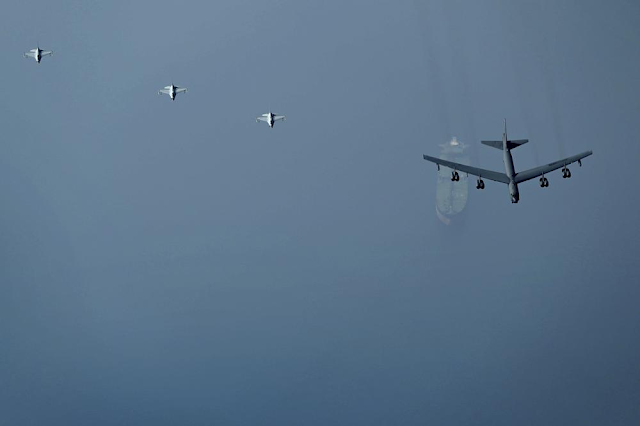US bombers fly over Mideast amid tensions with Iran
As tensions between Washington and Tehran remain high, the US military announced on Monday that it had flown two nuclear-capable B-52 long-distance bombers over the Middle East in a show of force.
In training missions on Sunday, the bombers flew over the eastern Mediterranean, the Arabian Peninsula, and the Red Sea with Kuwaiti and Saudi warplanes before taking off from the Royal Air Force base in Fairford, England.
Threats against the United States and its allies will not go unanswered, according to a statement from Lt. Gen. Alexus Grynkewich, the highest American Air Force officer in the Middle East. Missions like this demonstrate our capacity to work together to thwart and, if necessary, defeat our enemies.
Although the Central Command of the U.S. military left Iran out of its statement, Washington routinely sent B-52 bombers to the area as tensions between the U.S. and Iran lingered. Such a flyover hadn't occurred since June.
A number of increasing events in the region were provoked by former President Donald Trump's decision to have the United States leave the historic nuclear agreement between Tehran and other international powers.
The Iranian military last week intercepted two American maritime drones in the Red Sea as diplomats haggled over the possibility of the nuclear agreement being revived.
Only a few days prior, the nation's Revolutionary Guard militia released another sea drone while an American cruiser followed it. In order to monitor threats in the vital waterways, which have recently experienced a number of maritime strikes, the U.S. Navy has begun using ultra-endurance aerial surveillance drones.
After recent clashes in the area between U.S. forces and militias with Iranian support, tensions are still high. Last month, Washington conducted airstrikes in eastern Syria that were directed at sites utilized by militias supported by Iran's Revolutionary Guard, sparking retaliation from militants with Iranian support.
Negotiators from the United States and Iran are working to resurrect the 2015 nuclear agreement, which placed strict restrictions on Iran's atomic program in exchange for the lifting of international sanctions. The State Department labeled Iran's most recent negotiating posture as "not helpful" last week.
Iran is currently enriching uranium to a purity of 60%, which is a quick technical step away from 90% and a level it had never achieved previously. Nonproliferation experts caution Tehran has enough 60%-enriched uranium to reprocess into fuel for at least one nuclear weapon, despite the country's long-standing claims that its program is peaceful.



Comments
Post a Comment